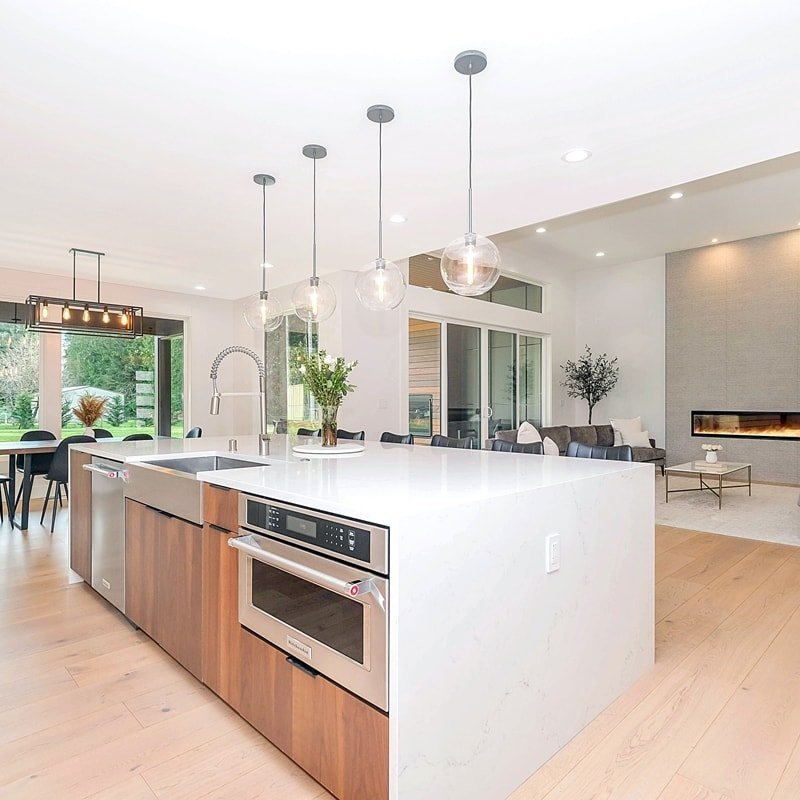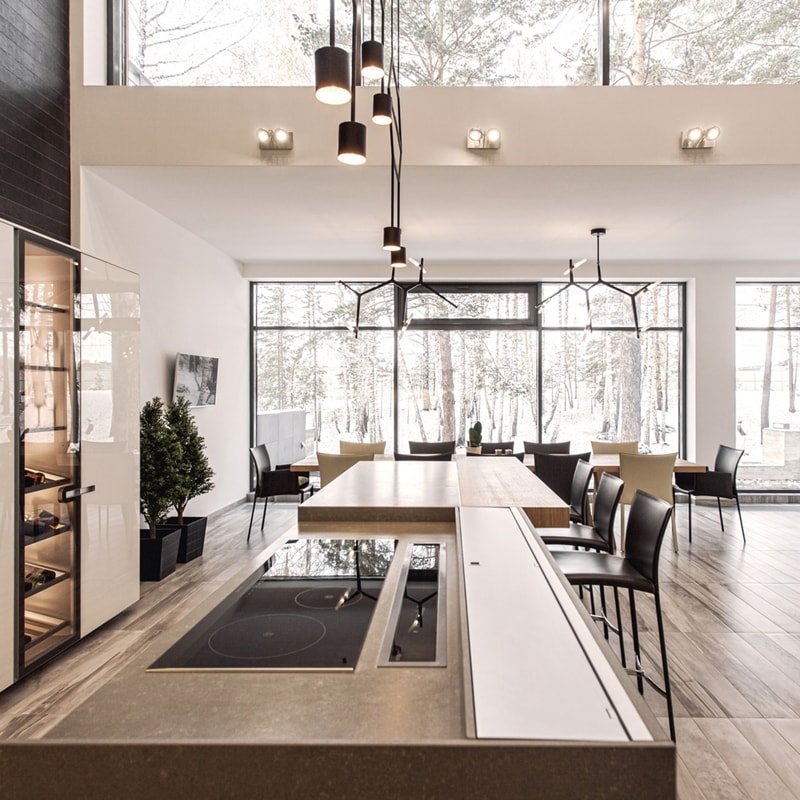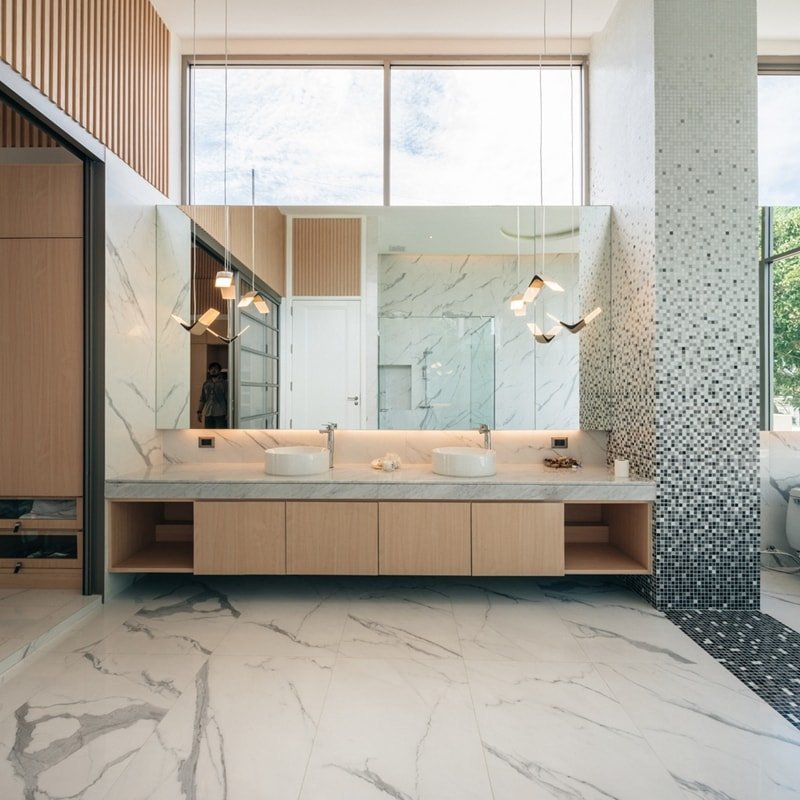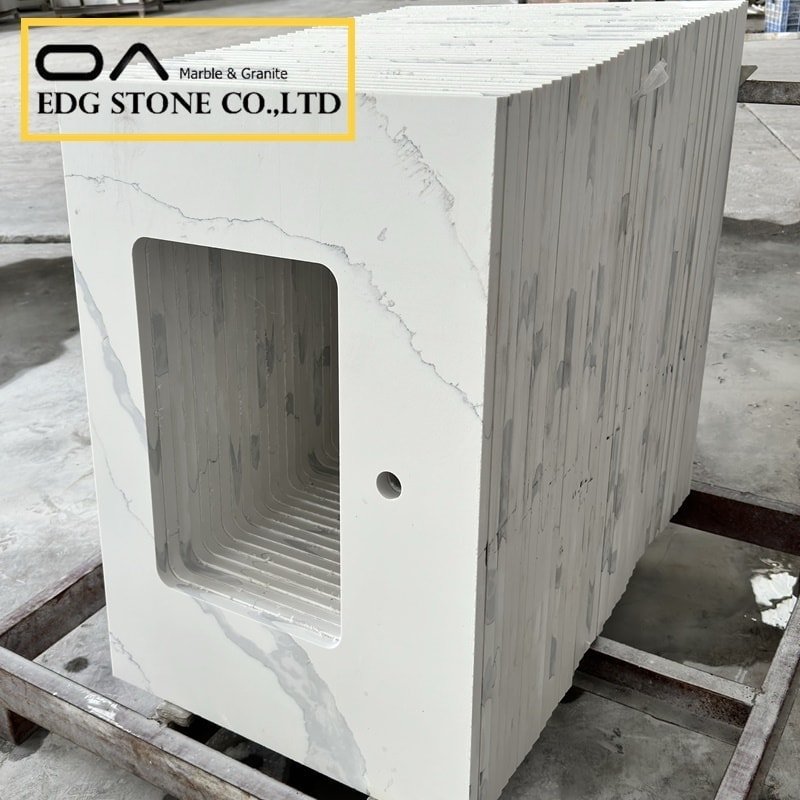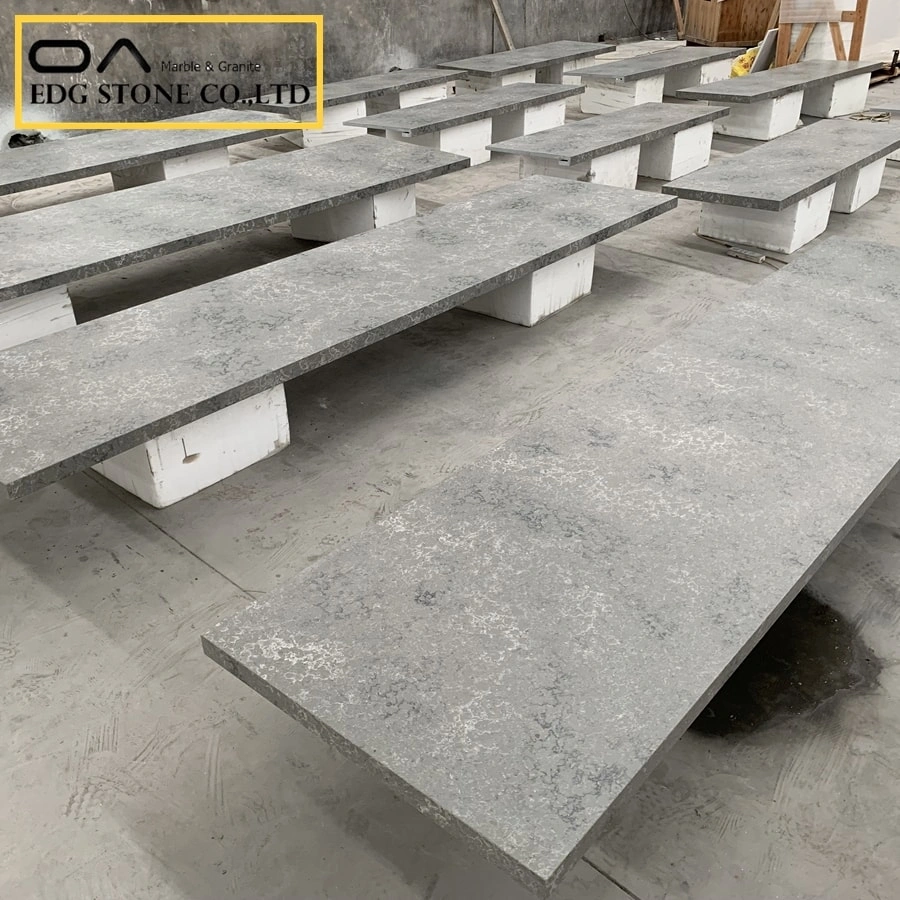Polished:
The surface is very smooth and highly polished for a mirror effect and high gloss. Granite, marble, and limestone are often polished and require specific maintenance to maintain their luster.
Matt:
The surface is smooth, but the degree of polishing is low, producing a diffuse effect that has no gloss, does not form a mirror effect, and is not susceptible to light pollution.
Coarse grinding:
The surface is simply polished to eliminate the machine-cut texture formed during the cutting of the wool board, giving a rough matte effect.
Machine cut:
Direct cutting and forming using equipment such as a disc saw or bridge cutting machine, the surface is rough, with obvious machine cutting lines.
Pickling:
The use of strong acid to corrode the surface of the stone, forming tiny corrosion marks, the appearance is more simple than the polished surface. Most stones can be pickled, but the most common are marble and limestone. Pickling is also a way to reduce the luster of granite.
Lichee:
The surface is rough and uneven, and small holes are densely chiseled through the surface to create the effect of water droplets dripping on the stone over the years.
Pineapple:
The surface is rougher than that of lychee processing, similar to the skin of pineapple.
Chopping axe:
Also known as longan face, by tapping on the surface of the stone with an axe, a dense strip-like texture is formed, somewhat similar to the effect of longan peel.
Fire:
Rough surface. This surface treatment is mainly used for the decoration of interiors such as floors or commercial buildings, and labor costs are high. It is heated at a high temperature and then quickly cooled to form a fire surface. Fire surfaces are commonly used for granite.
Dehiscence:
Commonly known as natural noodles, the surface is rough, but not as rough as the fire noodles. This surface treatment is usually cut by hand or knocked in the mine to reveal the stone’s naturally cracked lines.
Rolling:
The surface is smooth or slightly rough, and the corners are smooth and broken. There are several ways to achieve a tumbling effect. 20 mm stone bricks can be tumbled in the machine, and 3 cm stone bricks can also be tumbled and then split into two bricks. Marble and limestone are commonly used for tumbling materials.
Scrub:
The surface has an antique effect. The treatment process is to brush the surface of the stone, mimicking the natural wear effect of the stone.
Water flush:
Use high-pressure water to directly impact the surface of the stone, peeling off the softer parts to form a unique rough decorative effect.
Archaize:
Imitating the ancient effect of stone after a period of time for surface processing, usually using an antique grinding brush or antique water treatment, of which the effect and cost performance of antique grinding brush is higher, and it is more environmentally friendly.
Fire Antique:
It is first burned and then processed with antiques.
Pickling antique:
It is pickled first, followed by antique processing.
Sandblasting:
Use ordinary river sand or emery instead of high-pressure water to impact the stone surface to form a flat decorative surface with a frosted effect.
Trenching:
A groove of a certain depth and width is cut on the surface of the stone.
Mushroom noodles:
Generally, by manual chisel, the effect is similar to natural splitting, but the surface of the stone presents a plateau-like shape with depressions around the middle protrusion.
